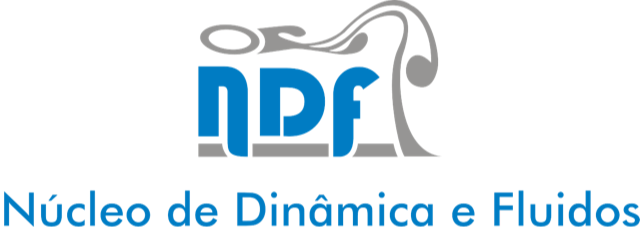A novel method based on the Otsu threshold for instantaneous elimination of light reflection in PIV images
Nesse trabalho, foi desenvolvido um novo método, denominada Otsu-Gauss-Wiener (OGW), para retirar o reflexo indesejado de luz em paredes fixas ou objetos em movimento em medidas de velocimetria por imagem de partículas. Essa abordagem separa a imagem saturada causada pelo espalhamento indesejado de luz das imagens de partículas traçadoras através do limite de Otsu combinado com o filtro de Gauss e o filtro local adaptativo de Wiener. O método OGW é de baixo custo computacional e está disponível para download no Github (https://github.com/RdeLAmaral/OGW-mask).
O desempenho do método OGW foi analisado utilizando imagens sintéticas e reais de medidas PIV. Nas imagens sintéticas, os autores analisaram o reflexo causado por um objeto em diferentes tamanhos, formas e intensidades para avaliar o desempenho do método proposto. Posteriormente, o OGW foi testado em casos experimentais PIV com adversidades reais, por exemplo, espalhamento de luz em uma parede fixa em um canal com colinas periódicas, forte reflexão em um rotor centrífugo e dispersão de luz causada por um movimento fora do plano do diafragma de um dispositivo de assistência ventricular pediátrica pulsátil. Os resultados mostraram que o método pode remover os reflexos de objetos estáticos e em movimento usando uma máscara gerada automaticamente para cada instante.
Conceitualmente o OGW foi iniciado e é aplicado em um ambiente colaborativo para desenvolver ferramentas de processamento e otimização PIV. O ambiente é conhecido como “Grupo PIVbr” (
www.piv.eng.br) e é formado por pesquisadores da USP, Instituto do Coração, UNICAMP, UFABC.
In this work, a new method, called Otsu-Gauss-Wiener (OGW), was developed to remove unwanted light reflection from fixed walls or moving objects in particle image velocimetry measurements. This approach separates the saturated image caused by unwanted light scattering from the tracer particle images through the Otsu limit combined with the Gauss filter and the adaptive local Wiener filter. The OGW method is of low computational cost and is available for download from Github (https://github.com/RdeLAmaral/OGW-mask). The performance of the OGW method was analyzed using synthetic and real images of PIV measurements. In synthetic images, the authors analyzed the reflection caused by an object in different sizes, shapes and intensities to assess the performance of the proposed method. Subsequently, the OGW was tested in PIV experimental cases with real adversities, eg light scattering in a fixed wall in a channel with periodic hills, strong reflection in a centrifugal rotor and light scattering caused by an out-of-plane diaphragm movement of a pulsatile pediatric ventricular assist device. The results showed that the method can remove reflections from static and moving objects using an automatically generated mask for each instant. Conceptually, OGW was started and is applied in a collaborative environment to develop PIV processing and optimization tools. The environment is known as “Grupo PIVbr” (www.piv.eng.br) and is formed by researchers from USP, Instituto do Coração, UNICAMP, UFABC.
